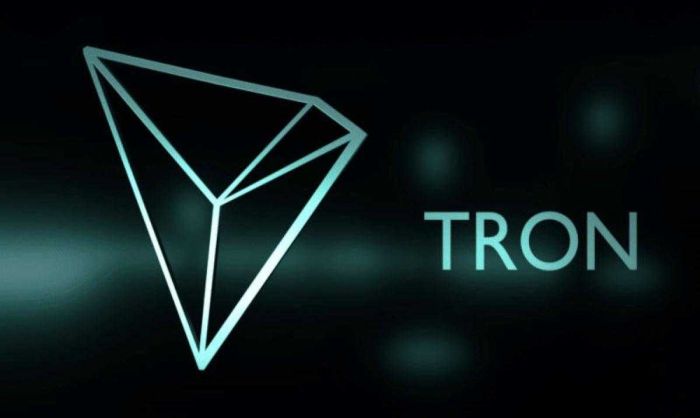[ad_1]
One innovative consensus mechanism that has gained significant attention is TRON. In this article, we will explore TRON’s revolutionary consensus mechanism and how it is reshaping the blockchain landscape.
As you comprehend the novel consensus mechanism of TRON, it’s also worth discovering how Bitcoin Buyer is transforming trading strategies. To get started, you need to click bitcoin-buyer.app and use its pro level trading features.
Exploring TRON’s Consensus Mechanism
In DPoS, block production and validation are carried out by a select group of trusted individuals known as Super Representatives (SRs). These SRs are elected by TRON token holders through voting, creating a decentralized governance model. The number of SRs is limited to ensure efficiency while maintaining decentralization.
One of the key advantages of TRON’s DPoS is its ability to achieve high transaction throughput. By designating a small number of SRs to validate transactions, DPoS can process a large number of transactions in a shorter timeframe compared to PoW-based blockchains. This scalability feature makes TRON well-suited for applications that require fast and high-volume transactions, such as decentralized exchanges and gaming platforms.
Energy efficiency is another significant benefit of TRON’s consensus mechanism. Unlike PoW systems that rely on extensive computational power and energy consumption, DPoS operates on a more streamlined model. By reducing the number of nodes involved in block validation, DPoS significantly reduces energy requirements, making TRON a greener and more sustainable blockchain platform.
In TRON’s DPoS, the election process for Super Representatives is transparent and democratic. Token holders have the power to vote for SR candidates, ensuring that those with the most support and trust from the community are elected. This governance aspect fosters a sense of community involvement and gives token holders a voice in shaping the direction of the TRON ecosystem.
TRON’s Super Representatives
The selection of Super Representatives is based on a voting system where TRON token holders have the power to elect candidates they believe will best represent their interests. This voting process ensures that SRs are chosen based on community support and trust, fostering a sense of inclusivity and participation within the TRON ecosystem.
The number of Super Representatives is limited, striking a balance between decentralization and efficiency. By having a select group of SRs responsible for validating transactions and producing blocks, TRON can achieve high transaction throughput while maintaining the security and decentralization of the network.
Once elected, Super Representatives have specific responsibilities within the TRON ecosystem. They are responsible for validating transactions, proposing and voting on protocol upgrades, and maintaining the overall stability and security of the blockchain. This active involvement of SRs ensures that the TRON network operates smoothly and securely.
As a reward for their contributions, Super Representatives receive TRX, the native cryptocurrency of the TRON network. This incentive structure encourages SRs to fulfill their responsibilities diligently and actively participate in the governance and development of the ecosystem. By rewarding SRs with TRX, TRON aligns the interests of the network participants with the long-term success and growth of the platform.
Token Economics and Governance in TRON
Token economics and governance are integral aspects of TRON’s ecosystem, shaping the dynamics and decision-making processes within the network. Understanding how TRON’s token, TRX, functions and the governance mechanisms in place provides insights into the platform’s operation and community involvement.
TRX serves as the native cryptocurrency of the TRON network, playing a vital role in the token economy. It serves as a medium of exchange, allowing users to participate in transactions and interact with decentralized applications (DApps) within the TRON ecosystem. TRX also functions as a means of value transfer and facilitates rewards for Super Representatives and other network participants.
The token distribution and incentive structure of TRON are designed to promote engagement and participation. Upon the network’s launch, a significant portion of TRX was distributed through an initial coin offering (ICO) and airdrops to early adopters. This broad distribution aims to foster a diverse and active community of token holders, ensuring decentralization and reducing the influence of any single entity.
Governance in TRON is facilitated through a decentralized model that empowers token holders to participate in decision-making processes. TRON employs on-chain governance, allowing token holders to propose and vote on protocol upgrades, changes, and improvements. This inclusive approach ensures that the TRON community has a say in the evolution and development of the platform.
Conclusion
TRON’s innovative consensus mechanism, coupled with its decentralized governance and robust token economics, positions it as a prominent player in the blockchain industry.
With its scalability, energy efficiency, and community-driven approach, TRON offers a compelling ecosystem for decentralized applications. As TRON continues to evolve and address challenges, its consensus mechanism holds the potential to shape the future of decentralized systems.
The post The Beginner’s Guide To TRON’s Innovative Consensus Mechanism appeared first on Naijaloaded | Nigeria's Most Visited Music & Entertainment Website.
[ad_2]
Source link





